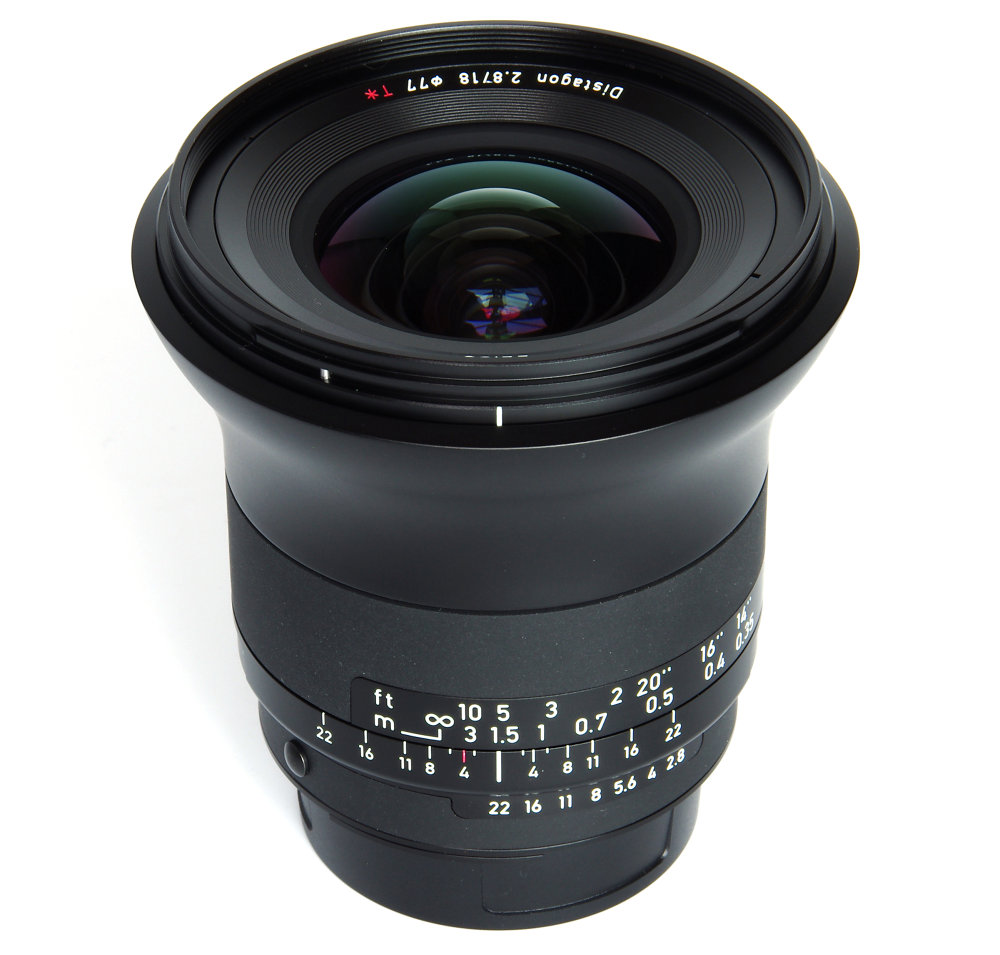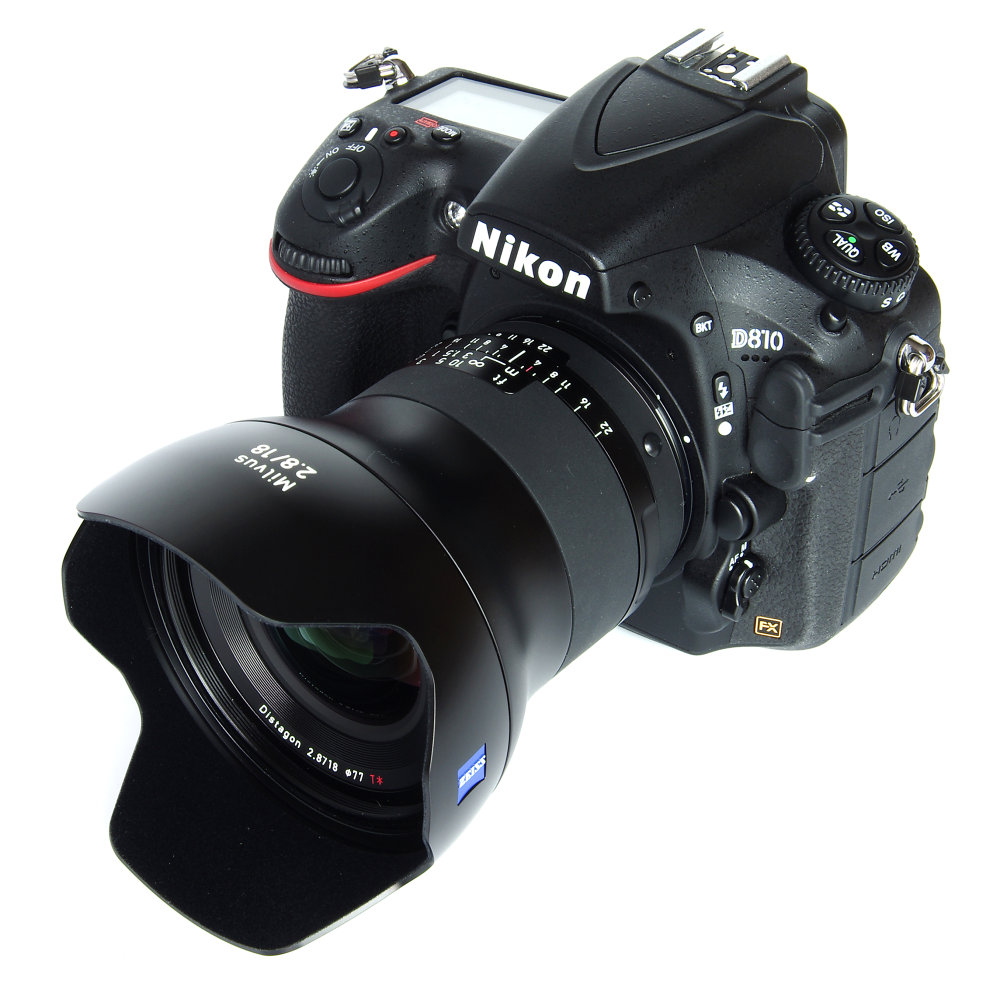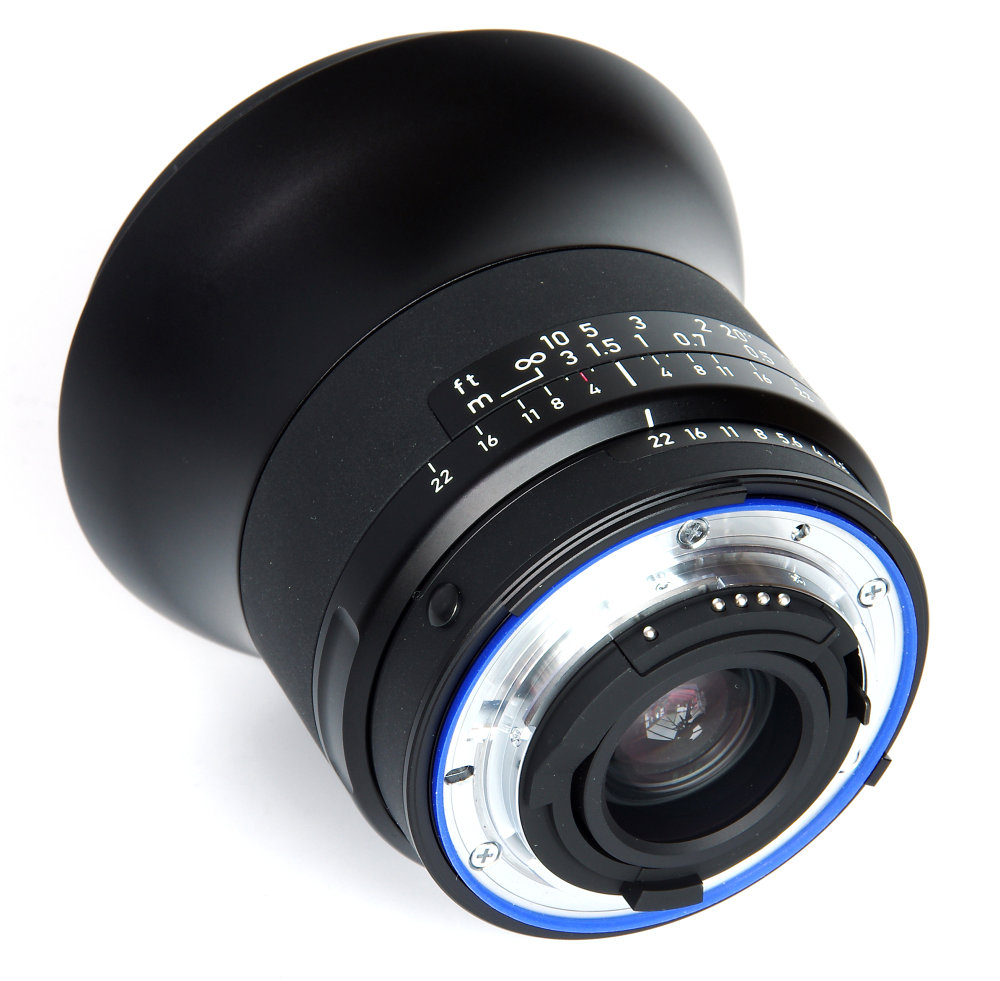Zeiss Milvus 18mm f/2.8 Review
Zeiss Milvus 18mm f/2.8 Handling and Features
Made in Japan, the manufacturing quality is not in doubt. The metal finish is beautifully engineered and all controls are as smooth as silk. The Milvus 18mm f/2.8 is a solid, beautiful object in its own right, weighing in at 675g (Nikon fit) and 721g (Canon fit). There is a 77mm filter thread, although with an ultra-wide lens it would seem prudent to only use filters if absolutely necessary and then to choose thin designs to avoid any vignetting.
The metal lens hood has a flocked interior and bayonets onto the lens very precisely. This should protect the domed front element as well as helping to avoid flare. When we peer into that front element we see the tiny aperture of 9 blades, virtually circular to enhance the bokeh of the lens. The Zeiss T* coatings render the glass almost invisible to the eye.
There is little to adorn the lens, but what there is offers good ergonomics. The focusing ring is very smooth and a pleasure to use. A depth of field scale is also offered and this is very useful when estimating depth of field. Markings are clear and distances given in feet and metres. Focusing is down to 0.25m, or 9.84 inches, giving a maximum magnification of 1:7.4
The aperture ring has soft but positive click stops and in the Nikon version can actually be de-clicked using a small screw on the metal lens mount. On the Nikon D810 used for this review, the aperture is controlled by the camera, so the aperture ring on the lens is set to its click stop position of f/22.
Optical construction is a complex 14 elements in 12 groups, using a floating element design to maintain performance at all distances. There are 4 Anomalous Partial Dispersion and 2 Aspherical elements.
Finally, the lens is resistant to moisture and dust, which is a definite benefit and one increasingly found at all levels of lens manufacture. The benefits of being able to brave the elements are not to be underestimated.
Handling on the D810 is very nice indeed, manual focusing being better than average for such an ultra-wide lens and rather easier than using the 15mm version. The focusing aid on the D810 is also very useful. The 18mm Distagon design, when first introduced, was a revelation, interestingly being supplied with a special pink-tinged focusing screen for the Zeiss Contarex film cameras. This was to aid focusing, but with modern DSLRs such as the Nikon D810 this is no longer necessary.
There are plenty of wider lenses, but the 18mm has the advantage of being smaller, lighter and easier to focus manually. Its 100 degree diagonal field of view still gives plenty of scope for sweeping panoramas as well as offering the usual steep perspective that a close viewpoint gives. Portraits are more tolerable in terms of distortion, providing we are not too close, and the lens is certainly useful for full and half length shots and groups of people. Users of crop sensor APS-C format cameras would need a 12mm lens to achieve a similar effect.
Add your message
Please login here or if you've not registered, you can register here. Registering is safe, quick and free.
photodo Stats
428 MTF tests
74 in-depth photodo reviews
100+ users join each day
Help the lens community by reviewing or rating a lens today via our lens search
Latest Lens Reviews
- Chinon 28mm f/2.8 Vintage Lens Review
- Canon EF 70-200mm f/4L IS II USM Lens Review
- Samyang AF 85mm f/1.4 EF Review
- Sigma 70mm f/2.8 DG Macro Art Review
- Samyang AF 24mm f/2.8 FE Review
- Meike 50mm f/1.7 Review
- Tamron 70-210mm f/4 Di VC USD Review
- Lensbaby Burnside 35mm f/2.8 Review
- Asahi Super Takumar 50mm f/1.4 Review
- Asahi Super-Multi-Coated Takumar 135mm f/3.5 Review



